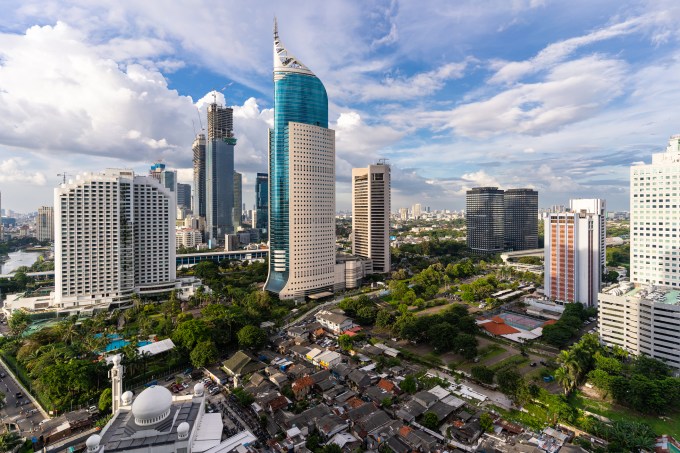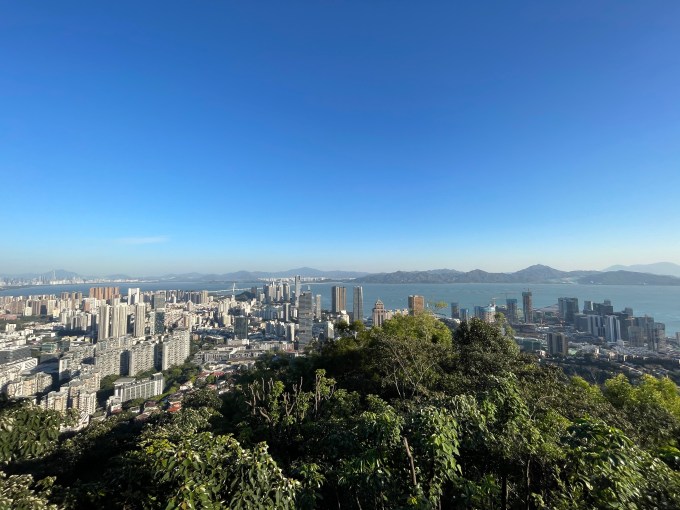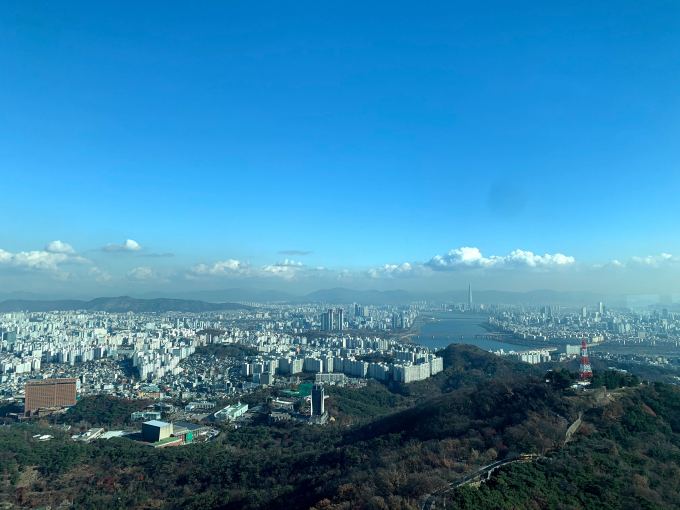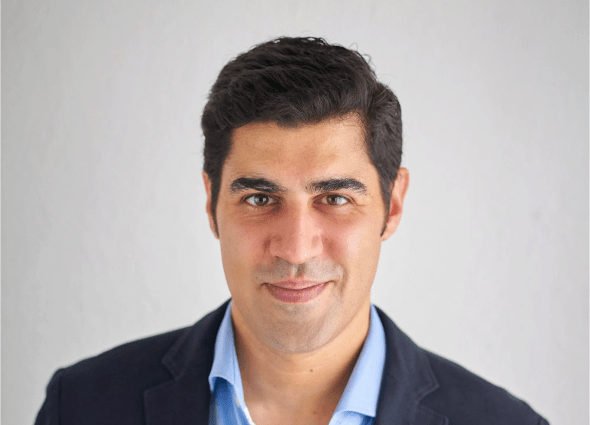A lot can change in 12 years. When I first joined TechCrunch in 2012, I was the only writer it had based out of Asia. For several years, it often felt like I was writing to correct misperceptions I saw in my articles’ comments or on Twitter.
Even though Baidu, Alibaba, and Tencent were innovating rapidly, they were frequently presented as copies of Western companies (“Alibaba, the Amazon of China,” etc). Despite being home to one-sixth of the world’s population, India was seen as a homogenous mass. People didn’t even bother paying attention to Southeast Asia outside of Singapore.
But I have to admit I also had misperceptions about markets outside of Taiwan, where I live, and I was really relieved when other journalists joined TechCrunch’s Asia team to provide on-the-ground expertise. For this article, I asked my colleagues on TechCrunch’s Asia team for their opinions on how outside perceptions of tech in each of their countries have evolved. They are Rita Liao (China), Manish Singh and Jagmeet Singh (India), and Kate Park (South Korea), four of the smartest people I know. (Note: Ivan Mehta is also a smart writer on this team, but his main remit is actually looking much further away than Asia.)
Today is my last day at TechCrunch. If there’s one thing I hope I’ve accomplished in my decade-plus here, it’s making it clear why Asia’s tech ecosystems matter. They don’t just impact people within their market. They’re influencing the rest of the world, through short-form videos, live-streaming, super apps, fintech, crypto, and much more. They’ve acquired Western companies, changed how social media is used, launched attention-grabbing initial public offerings, and become important manufacturing hubs for top smartphone makers. Ignoring them means you end up with a very myopic view of technology.
Southeast Asia

Jakarta, one of the busiest startup hubs in Southeast Asia
I’m going to start with Southeast Asia, since it’s my main beat. To say that startups there have evolved at a breathtaking pace over the past decade is an understatement. Despite its growth, however, tech in Southeast Asia is still underestimated by many people outside the region. I’ll give an example of why that’s wrong.
In 2013, I was sent by TechCrunch to the Global Entrepreneur Summit in Kuala Lumpur, Malaysia. I met Anthony Tan, who founded Grab the year before. At that point, its focus was to make hailing a taxi in Malaysia easier and safer, with its ، ambition, to evolve into a super app and financial services provider across eight Southeast Asian countries — Cambodia, Indonesia, Malaysia, Myanmar, the Philippines, Singapore, Thailand, and Vietnam — was still nascent.
Then Uber launched in Singapore in 2013. Over the next year, the two companies battled it out with a costly march into ever more territories. By 2018, Uber had sold its Southeast Asia business to Grab (SoftBank and Didi, which invested in both, won big). I remember at that time reading a lot of comments from outside of Asia expressing surprise that a local startup had “beat Uber.” But as former TechCrunch writer Jon Russell noted in May 2018, “the Grab deal feels somehow different since, prior to last year, Uber and Grab were fairly evenly matched.”
I believe that the Uber-Grab deal was the first time many people started to pay attention to Southeast Asia’s startup ecosystem, especially outside of Singapore. Like other places, SEA is currently impacted by the funding downturn — a stark contrast to the boom of 2021 and 2022 when funding happened so quickly my coverage could barely keep up (and to be honest, sometimes I couldn’t).
Startups in Southeast Asia deserve attention, not just because of the region’s scale — Indonesia alone is the world’s fourth most populous country — and its diversity; but because they are creating innovative products that can make an impact in many other countries.
One of my favorite stories for TechCrunch was a feature about shariah-compliant fintech built for Muslim users. These include financing for small businesses that don’t involve interest (which is prohibited by shariah law), online payment gateways that avoid non-compliant transactions like purchases of alcohol, tobacco and pork, and saving accounts for pilgrimages to Mecca.
Southeast Asia’s shariah-compliant fintech has an opportunity to break into other markets. According to a report by DinarStandard and fintech Ellipses, the market size of Islam fintech in the Organisation of Islamic Cooperation (OIC) countries is expected to grow at a 17.9% CAGR by 2026, compared to traditional fintech’s 13.5% CAGR over the same period.
An area I think where Southeast Asian startups are excellent overall is fintech services developed for unbanked or underbanked customers — that is, people who have little to no access to traditional financial services like banking accounts or loans, often due to issues like a lack of credit bureau infrastructure, a problem that exists in markets around the world.
One standout is Kredivo, which has raised about $400 million in equity so far and is developing a wide range of products, including instant credit financing for e-commerce and offline purchases, and personal loans. It also operates a neobank called Krom. Since many of its customers don’t have a credit score, Kredivo, like many other fintech startups targeting underbanked customers, has its own system for measuring creditworthiness, combining data sources like telcos, e-commerce accounts, and bank accounts.
The large number of unbanked and underbanked people in Southeast Asia also helped give rise to a thriving crypto and web3 scene. As Rita reported in 2022, there’s demand for alternative crypto-related finance to grow in the region. DeFi is doing especially well because it gives users a chance to earn yield and access to capital without traditional financial intermediaries. Each Southeast Asian country of web3 adoption has its own flavor of crypto innovation. For example, Vietnam has “، engineers,” while Singapore produces SaaS products. One notable startup is Pintu, a crypto trading app that raised funding at a fast clip between 2021 and 2022.
China

Shenzhen’s skyline by Rita Liao
For China, I asked Rita to give me an overview of the many trends she’s seen evolve over the years, especially ones that have influenced other markets. She’s the most insightful journalist I can think of covering China tech. When I started at TechCrunch, China was still seen by many Western readers as a tech ecosystem filled with copycats, especially of American companies. For example, Baidu was often referred to as “China’s Google” (and I’m embarrassed to say I wrote just that in the headline of my first article for TechCrunch). That perception has changed dramatically over the past 10 years.
Less U.S. venture capital firms are investing in China now, due to geopolitical and other factors, but they have already set trends around the world, and continue to do so.
I’ll start with TikTok since it is the first social media app from a Chinese tech company to reach its level of success in the United States. Developed by ByteDance as the overseas version of Douyin, it launched in 2017 and soon merged with Musically after ByteDance acquired the latter. The short-form video and live-streaming formats that it popularized also eventually were copied as core features on Facebook, Instagram, and YouTube. Its success was not exactly feature innovation, but more execution. Rita notes that live-streaming was around before TikTok launched its Live feature in 2019 in the U.S. — YouTube had it in place from 2011 — but TikTok (and Douyin, its Chinese version) have made it a key feature of its hugely popular app.
Eight years on, TikTok continues its momentum. A Pew Research Center report recently found “relatively explosive growth” over the last two years, with about a third of people surveyed saying they had used the platform.
It was also, arguably, a victim of that success. In 2020, just four years after its launch, the U.S. government trained its eyes on it as a security threat. It became a political football and an epic saga. The conflict appeared eventually to die down — even President Biden’s reelection team joined it — but it’s not out. In the last week, the U.S Senate asked Biden’s team to stop using the app. The app remains banned in several other countries, like India, and it was recently included among social media platforms called to Congress over child safety. Beyond all of this, though, its influence on internet culture is clear, and so is its force as a business: it is expected to overtake Facebook in influencer spending this year.
Another influential app is WeChat, developed by Tencent. The stripped down version available outside of China makes it hard to see just how essential it is to the daily lives of Chinese users. WeChat may have started as “just” a messaging platform, but it also was a key innovator of the “super app” model, with social networking, shopping, games, ride hailing, maps, and movie booking all within the app. It’s spawned an ecosystem, too, with third-party “mini programs,” or mini apps by third party developers, available. More importantly, it’s turned into one of China’s biggest mobile payments providers (something Jon Russell first covered in 2016), used by service providers like taxi drivers to accept payments. You could *probably* survive in China without WeChat, but your life would be a lot harder to navigate.
In places like the United States and Europe, companies like Facebook and Telegram have tried to replicate WeChat’s success as a super app. Traction has been uneven, though. The concept has seen the most success in countries where data is expensive and downloading one app with multiple services is more cost-friendly than several apps.
Two other notable examples of how Asia has really run with the super app concept are Grab and rival Gojek. Both started as ride-hailing apps, but now offer financial services, like payments, on-demand delivery, and logistics.
Another Chinese company having an influence in other markets is PDD, which started as a much smaller e-commerce competitor against giants like Alibaba and JD, before giving rise to social commerce. PDD owns Pinduoduo and its sister app Temu. Pinduoduo enables users to make group purchases for lower prices. That might make it tempting to compare it to Groupon, but it’s different in two ways. First, team purchases are initiated by buyers, not sellers. Secondly, it’s focused on clothes, produce and other daily use items (in fact, PDD has invested heavily in agriculture, as Rita covered). Temu offers inexpensive factory-to-consumer goods.
PDD’s bid to compete with Amazon in the U.S., launched in 2022, has generated a lot of downloads thanks to generous user subsidies, making Temu the most downloaded app in the U.S. last year. It’s making an impact in other ways, too. Last December, my colleague Alex Wilhelm made an argument for why people should pay attention to the rivalry between PDD and Alibaba. Alex noted that PDD is now worth more than Alibaba, even though Alibaba is still a lot ،. This can mean good things for China’s startup ecosystem.
“Major tech companies in China have long been critical startup investors, and that role could become even more important in the Chinese tech ecosystem as venture capital investment in the country declines,” Alex wrote. “So if Alibaba and PDD have lots of value and cash, they could help keep domestic startups afloat if they want to.”
India

Skyline view of Bengaluru
When Rita joined TechCrunch, I was so relieved to finally have on-the-ground expertise for such a vast and complex market. I felt the same way when Manish and then Jagmeet came onboard to cover India. I’m not too proud to say I never felt equipped to report on India’s tech scene well. I’ll give you one example why. In September 2013 I wrote an article about how Microsoft’s acquisition of Nokia’s Devices & Services was a bet on emerging markets and meant it might sell off Nokia’s feature phone business to focus on low-cost smartphones instead.
But this article emerged only after I had drafted one about how Microsoft was planning to double down on feature phones as it dug deeper into markets in India. I sent it to my editor Ingrid Lunden, and she pointed me to research showing global sales of smartphones were beginning to overtake feature phones. I had to rewrite my article because I wrongly assumed that consumers in India were still willing to settle for feature phones when smartphones were taking off in the rest of the world.
One of the myths Manish dispelled with his reporting was the misconception that its consumers are willing to sacrifice quality and experience for price. In an article from last September, Manish wrote that even though Indian consumers are traditionally seen as price-conscious, they are increasingly demanding premium items. Not only do they want luxury smartphones, but they also want luxury hotels, real estate, cars, and even fans as buyers pay a premium for aesthetics.
“Indian consumers’ willingness to dig deeper into their wallets has major implications for startups operating across nearly every category, allowing firms to improve their profit margins without compromising on quality,” Manish noted.
Another misconception about India is that the country is a homogenous mass. As Jagmeet told me in our Slack messages, India has complex demographics encompassing different age, income, and language brackets. So Amazon, Facebook, and Walmart all failed when they took a one-sized-fits-all approach to India.
Free Basics, a Facebook-owned free app that let people connect to Facebook and other sites like BabyCenter, Wikipedia, and Bing, is an interesting case study. Created for use in markets throughout Africa, South and Southeast Asia, and Latin America, it was meant to increase internet adoption among “the next billion,” as users in emerging markets were often called. Facebook obviously also wanted to gain more users. But in India and many other countries, Free Basics immediately led to backlash for undermining net neutrality. As Jagmeet told me, legislators including Rajeev Chandrasekhar, now the deputy IT prime minister and a member of India’s ruling party, led political outrage against Free Basics. On a fundamental level, Facebook also underestimated what Indian consumers want—access to the entire internet instead of a pre-selected collection of sites.
Another example of an American tech giant bungling its India strategy was the launch of Android One smartphones in 2014. Designed for affordability, neither its hardware or software could compete with rivals from Indian and Chinese manufacturers like Xiaomi.
There are some things in India’s tech ecosystem that are still developing, like its increasing importance as a manufacturing hub for companies like Apple, Samsung, and Google. Manish told me that nobody thought India would become a key hardware manufacturing hub a decade ago. But that has changed due to factors like a government push and incentives, alongside India’s growing economy.
Manish also noted that the Indian stock market is open to tech startups. Zomato, which was among a crop of tech companies that listed in 2021, is performing well, and investment banks like Nomura, Goldman Sachs, Morgan Stanley, and Jefferies are pursuing other Indian startups.
South Korea

A view of Seoul by Kate Park
In 2013, my then-editor in chief asked me to go to SparkLabs’ first Demo Day in South Korea. I sat at dinner with the founders of SparkLabs, which has since grown into a global network of startups accelerators and venture capital funds, and listened to them talk about how they wanted to give back to South Korea’s startups after their own successes as entrepreneurs. South Korea’s startup ecosystem was then fledgling, with chaebols like Samsung, LG, Hyundai, and SK dominating the tech industry.
Since then, the South Korean startup ecosystem has blossomed, thanks to a combination of private investments and billions of dollars in government support from agencies like the Ministry of Science & ICT and the Ministry of SMEs & Startups. Among her other insights, Kate told me that chaebols are getting in on the act with corporate venture capital arms like Samsung Catalyst Fund, dedicated to deep-tech, LG Technology Ventures, and Hyundai’s strategic investment fund.
All this capital has borne fruit in the form of unicorns like neobank Toss, e-commerce app Coupang, peer-to-peer marketplace Danggeun, and real estate platform Zigbang. Examples of startups that have gone public include Coupang and game publisher Krafton.
Coupang is especially interesting because just a few years after it was founded by Bom Kim in 2010, it had not only become the market leader in South Korea, but redefined e-commerce with its ultra-fast deliveries. For example, if someone ordered an item by midnight, it would be at their doorstep by 7 A.M. This was thanks to Coupang’s heavy investment in its logistics network. When it was founded, there were no major third-party logistics providers like UPS or FedEx in South Korea. As a result Coupang had to build its own infrastructure, including fulfillment and logistics centers. This means that about 70% of South Korea’s population now lives within seven miles of a Coupang logistics center.
The company is taking a two-pronged approach to global expansion. Over the last few years, it has entered Taiwan and Japan. And in 2023, Coupang acquired Farfetch in a deal worth $500 million, giving it a presence in even more markets.
Taiwan

Another beautiful day in Taipei by Catherine Shu
I saved Taiwan for the last because I live here and it is very special to me. In 2011, James Hill, who worked at the Institute for Information Industry, pitched me about an incubator program while I was still at the Taipei Times. “What the ، is an incubator program,” I thought. “Is it a chicken thing?” I quickly realized it was not a chicken thing, and wrote about startups for the very first time in this article. Rereading it for the first time in years reminded me I used the phrase “Web start-up.” Over the next year I continued to cover Taiwanese Web start-ups, including Pinkoi and Hulihealth. In 2012, John Biggs was connected with me and asked if I’d be interested in joining TechCrunch since they needed a writer in Asia.
Taiwan’s startup ecosystem is close to my heart, but often overshadowed by TSMC and other players in the semiconductor industry. But startups continue to develop and during my time at TechCrunch, it was gratifying to see four startups hit unicorn status and then go public: Appier, Perfect Corp., Gogoro and 91APP. But Taiwanese startups still need a lot of financial and government support of the type seen in South Korea and Japan, and I hope they get it.
To be clear, the Taiwanese government does offer funding. These include grants of up to $100 million NTD ($3.2 million USD) for startups that are less than five years old through Taiwan’s National Development Fund and a whole bunch of other programs. Outgoing President Tsai Ing-wen’s administration also implemented policies like the New Southbound Policy for businesses that plan to expand to South and Southeast Asia, Australia and New Zealand.
But what startups need is more money to sustain later-stage growth. This is especially important for startups in sectors like deep-tech, that may take years before they are ready for commercialization. A recent report by PwC and the Taiwan Institute of Economic Research found that the majority, or 77.3%, of funding happens at angel and seed stages, with rest stretched out between growth-stage rounds.
This challenge has, of course, been compounded by the funding winter. VCs I talked to said it’s often difficult for startups to get funding once they hit Series B and beyond. To be sure, the same thing is currently happening around the world, but in Taiwan it’s especially crucial for startups to get long-term support if they want to scale into other markets and put the country’s startup ecosystem on the map. Financial support doesn’t just come in the form of capital. Founders and VCs also want to see more tax subsidies for startups, similar to the ones the government implemented for the biotech and semiconductor industries. Regulations can also be changed to make obtaining foreign investment easier.
Startups face the question of where to expand very early on because Taiwan is relatively small with a population of 23.6 million people. Over the last decade, I’ve heard a lot of different target markets named by founders and investors. The ones most frequently mentioned are Southeast Asia, Japan, and South Korea because of their proximity, so I was surprised to see that the PwC named the United States as the top target picked by the startups it surveyed.
But that makes sense. Taiwan unicorn Perfect Corp, which provides AI and augmented reality software for beauty and fashion brands, has grown in the United States, in addition to other markets. Perfect Corp. has its own app, YouCam, that lets users try on different hair and makeup looks, but its technology has also been used by clients like beauty conglomerates Estée Lauder and L’Oréal Paris and integrated into apps like YouTube, Snap, and Google Search.
Like Perfect Corp., Appier’s tech is also focused around AI, which it uses to help companies with user acquisition strategies. The PwC/Taiwan Institute of Economic Research found that more than 70% of the startups it surveyed were working on AI projects. The top sector they are targeting is healthcare. In Taiwan, AI has already been deployed at Taichung’s China Medical University Hospital and Taipei’s National Taiwan University to help with diagnosis.
One source of hope for startups is President-elect Lai Ching-te’s promise to help startups through strategic investments, loosening regulations, and creating 20,000 new startup jobs. But a lot is still unknown, including policy details and how long it will take to pass new regulations since no party holds an absolute majority in the Legislative Yuan. I covered Lai’s potential impact on the startup ecosystem.
***
Wow. Twelve years at TechCrunch. Writing this article means I spent a lot of time shifting through my old posts, revisiting memories from my time at TechCrunch. It was a trip down memory lane and, in some cases, a trip down typo lane. If you made it with me to the end of this article, thank you.
I’m grateful to the people who have read my work over the years and the startups and investors I’ve spoken to for my articles. I hope I’ve done my part to help more readers understand why tech in Asia is not only essential to follow, but really exciting. Keep an eye on Asia tech, or else it’s going to sneak up behind you and then do the tech equivalent of popping a balloon right next to your ears. For my readers in Chinese-speaking countries: 謝謝您們這麼用心,認真,持續閱讀我的報導.
Please continue following Rita, Kate, Jagmeet, Manish and Ivan’s work at their author pages. It’s been a pleasure, and extremely humbling, to be considered their peer. If you want to get in touch with me, my DMs are open on LinkedIn and X.
منبع: https://techcrunch.com/2024/02/29/dont-ignore-asia-tech/

